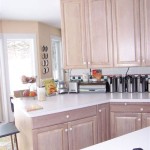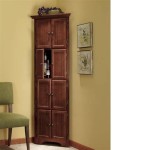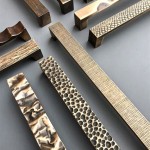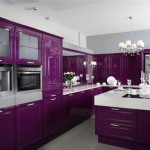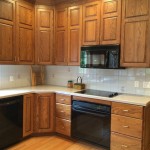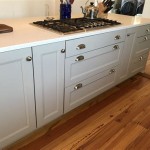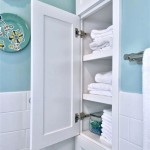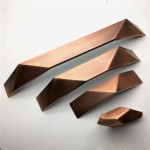What Are The Parts Of A Cabinet Door Called?
Understanding the anatomy of a cabinet door is essential for anyone involved in kitchen or bathroom remodeling, furniture making, or simply tackling home repairs. Knowing the correct terminology for each component facilitates communication with contractors, designers, and suppliers, ultimately leading to smoother projects and more accurate results. A cabinet door, seemingly a simple structure, is composed of several distinct parts working together to provide aesthetic appeal and functionality. This article will dissect the various components of a typical cabinet door, clarifying their functions and the terms used to identify them.
At its core, a cabinet door is designed to provide access to the contents of a cabinet while simultaneously contributing to the overall aesthetic of the room. Cabinet doors are available in a multitude of styles, ranging from simple, flat panels to elaborate, multi-piece constructions. This diversity in design necessitates a precise understanding of the parts that constitute each type. This article will predominantly focus on the parts found in a five-piece cabinet door, which are among the most common and versatile designs.
The Stile: The Vertical Backbone
The stile is one of the two vertical components that frame the cabinet door. It runs the full height of the door and provides structural support. Typically, there are two stiles per door: one on the left side and one on the right side. These stiles are critical for maintaining the door's shape and preventing warping. The stiles also provide a surface for hinges to be attached, ensuring the door can properly swing open and closed.
The width of the stile can vary depending on the design and style of the cabinet door. Wider stiles are often found in more traditional designs, providing a more substantial look, while narrower stiles are often incorporated into contemporary designs to create a sleeker appearance. Regardless of the width, the stile's primary function remains the same: to provide vertical support and a secure point of attachment for hinges.
The material used for the stile is usually the same as the material used for the rest of the cabinet door, commonly wood, MDF (Medium-Density Fiberboard), or a combination of both. Solid wood stiles are generally preferred for their durability and aesthetic appeal, particularly in high-end applications. MDF stiles, on the other hand, are often used in painted cabinet doors due to their smooth, consistent surface and resistance to expansion and contraction.
When ordering replacement cabinet doors or discussing repairs, accurately identifying the stile is crucial. Providing the correct dimensions and material specifications ensures that the replacement part matches the existing door seamlessly. Furthermore, understanding the stile's role in the overall structural integrity of the door helps in diagnosing and addressing potential issues, such as warping or hinge problems.
The Rail: The Horizontal Stabilizer
The rail is the horizontal counterpart to the stile. It runs across the top and bottom of the cabinet door, connecting the two stiles and completing the frame. Similar to the stile, the rail provides structural support and contributes to the door's overall stability. There are typically two rails per door: a top rail and a bottom rail. The top rail is located at the top edge of the door, while the bottom rail is located at the bottom edge.
The width of the rail can also vary depending on the style and design of the cabinet door. Similar to stiles, wider rails are more common in traditional designs, while narrower rails are often found in contemporary designs. The width of the rail can also influence the overall aesthetic of the cabinet door, impacting the proportions and balance of the design.
The construction of the rail mirrors that of the stile. Solid wood and MDF are the most common materials. The choice of material is usually dictated by the overall design aesthetic and the desired level of durability. In some cases, the rails may be constructed from a different material than the stiles, depending on the specific requirements of the design.
The rails are crucial for preventing the cabinet door from racking or twisting. They maintain the door's rectangular shape and ensure it fits properly within the cabinet frame. The joints that connect the rails to the stiles are often reinforced with glue and mechanical fasteners, such as screws or dowels, to ensure a strong and durable connection. These joints are a common point of failure in older cabinet doors, so understanding their construction is important for maintenance and repair.
The Panel: The Door's Decorative Center
The panel is the central component of a cabinet door, filling the space between the stiles and rails. The panel is primarily decorative, but it also provides some structural stability to the door. The panel can be made from a variety of materials, including wood, MDF, glass, or even metal. The material and style of the panel significantly influence the overall look and feel of the cabinet door.
One of the most common types of panels is the raised panel. Raised panels feature a profile that is thicker in the center and tapers towards the edges, creating a three-dimensional effect. This style is often found in traditional cabinet doors and adds depth and visual interest to the design. In contrast, a flat panel is a simple, unadorned piece of material that sits flush with the surrounding stiles and rails. Flat panels are often used in contemporary cabinet doors to create a clean, minimalist aesthetic.
Another type of panel is the glass panel. Glass panels can be clear, frosted, or textured, and they allow the contents of the cabinet to be visible. Glass panels are often used in display cabinets or cabinets that store decorative items. The glass can be held in place by a variety of methods, including glazing or retaining clips.
The panel is typically held in place by a groove or rabbet cut into the inside edges of the stiles and rails. This groove allows the panel to float freely within the frame, accommodating any expansion or contraction of the materials due to changes in humidity or temperature. This is particularly important for solid wood panels, which are more susceptible to movement than MDF panels.
The panel can significantly affect the overall aesthetic and functionality of the cabinet door. The choice of panel material, style, and finish can transform the appearance of a kitchen or bathroom, making it essential to carefully consider the panel when selecting or designing cabinet doors.
The Joinery: Connecting the Components
The joinery refers to the methods used to connect the stiles, rails, and sometimes the panel to create a strong and durable cabinet door. The type of joinery used can significantly impact the strength and longevity of the door. Several common joinery techniques are employed in cabinet door construction.
One of the most common methods is the mortise and tenon joint. This involves cutting a rectangular hole (the mortise) in one piece of wood and shaping the end of another piece of wood into a corresponding projection (the tenon). The tenon is then inserted into the mortise, creating a strong and interlocking joint. Mortise and tenon joints are often used to connect the stiles and rails of cabinet doors, providing excellent strength and stability.
Another common joinery technique is the cope and stick joint. This involves shaping the edges of the stiles and rails with a decorative profile and then cutting a matching profile into the ends of the rails. When the stiles and rails are assembled, the profiles interlock, creating a visually appealing and structurally sound joint. Cope and stick joints are often used in conjunction with a groove or rabbet to hold the panel in place.
Dowel joints are another option, particularly for less expensive cabinet doors. Dowel joints involve drilling holes in the edges of the stiles and rails and inserting wooden dowels to align and reinforce the joint. While not as strong as mortise and tenon joints, dowel joints can be effective when properly executed with glue.
The quality of the joinery is a critical factor in the overall quality of the cabinet door. Well-executed joinery ensures that the door remains strong and stable for many years, while poorly executed joinery can lead to premature failure. When inspecting cabinet doors, it is important to carefully examine the joints for signs of weakness, such as gaps, cracks, or loose connections.
The Finish: Protecting and Enhancing the Appearance
The finish is the final layer applied to the cabinet door, serving both a protective and decorative purpose. The finish protects the wood or MDF from moisture, scratches, and other types of damage, while also enhancing the appearance of the door. A wide variety of finishes are available including paints, stains, varnishes, and lacquers.
Paint is a popular choice for cabinet doors, particularly when a solid color is desired. Paint provides a durable and opaque finish that can be easily cleaned and maintained. Paint is often applied in multiple coats, with sanding in between coats, to create a smooth and uniform surface. MDF cabinet doors are particularly well-suited for painting due to their smooth, consistent surface.
Stain is another common option, particularly for wood cabinet doors. Stain penetrates the wood, highlighting its natural grain and adding color. Stain is available in a wide range of colors, from light and natural to dark and rich. After staining, a clear topcoat, such as varnish or lacquer, is typically applied to protect the stain and provide a durable finish.
Varnish is a clear, protective coating that provides a durable and water-resistant finish. Varnish is available in a variety of sheens, from matte to high-gloss. Varnish is often used over stained wood to protect the stain and enhance the wood's natural beauty.
Lacquers are another type of clear finish that provides a durable and fast-drying finish. Lacquers are often used in commercial applications due to their durability and resistance to chemicals. Lacquers can be applied in multiple coats to create a thick and protective finish.
The quality of the finish is a critical factor in the overall appearance and longevity of the cabinet door. A well-applied finish protects the door from damage and enhances its beauty, while a poorly applied finish can detract from its appearance and lead to premature failure. When selecting cabinet doors, it is important to carefully consider the finish and ensure that it is appropriate for the intended use and environment.
Understanding the components of a cabinet door allows homeowners, carpenters, and designers to communicate effectively and ensures that any repairs or replacements are made accurately. The stile, the rail, the panel, the joinery and the finish all contribute to the overall functionality and aesthetics of the cabinet door.

Anatomy Of A Cabinet Door Crystal Cabinets

Cabinet Parts And Profiles

Parts Of A Cabinet Doors

Selecting Cabinet Doors For A New Kitchen Craig Allen Designs

Cabinet Composition What Makes A High Quality

Cabinet Parts And Profiles

Kitchen Cabinet Terms Cabinets Of The Desert

Kitchen Cabinet Parts Terminology Granite Quartz Countertops Cabinets Factory

Parts Of A Cabinet Doors

How To Choose Kitchen Cabinets When Remodeling
Related Posts

